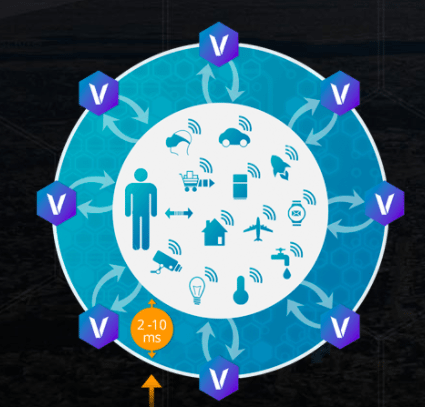Vapor IO’s partners include Intel, Crown Castle and Flex
High-value IoT applications like autonomous cars, virtual reality, and lights out manufacturing need networks that can respond in real-time. They need the power of cloud computing at the edge of the network. But cloud computing requires massive amounts of power and fiber connectivity, so finding a location for cloud services at the edge can be a challenge.
Cell towers are a logical place for edge-based data centers, according to Vapor IO, a startup founded two years ago by Cole Crawford, formerly the founding executive director of the Open Compute Project Foundation. Vapor IO is using open source software and modular infrastructure to bring data centers to the bases of cell towers through an initiative the company calls Project Volutus.
Tower giant Crown Castle recently invested in Vapor IO, potentially giving the startup access to thousands of cell towers nationwide. For now, Vapor IO says it will roll out its tower-based data centers in two U.S. cities, but it has not named the cities yet.
New infrastructure
Vapor IO has patented a self-contained, ruggedized circular enclosure system for servers that it calls a Vapor Chamber. The chamber is meant to enable dense deployments of servers in outdoor locations, and Vapor IO says it is 20% more “space efficient” than the typical data center rack. The Vapor Chamber is integrated with Vapor IO software and can be remotely controlled through a browser-based portal. The hardware will be made by Flex, the same company that recently agreed to purchase Ericsson’s power module portfolio.
Intel has partnered with Vapor IO to give wireless carriers a way to deploy virtual radio access networks at cell tower locations. Intel’s FlexRAN and Multi-access Edge Compute (MEC) software libraries can be used as reference designs by operators who want to centralize base station operations for a number of radio access nodes at one location using the Vapor IO platform. This architecture is expected to enable low-latency applications by eliminating the need to route network traffic to a faraway data center and back.
Other Vapor IO partners include Packet, a cloud service provider working to bring last mile edge computing to wireless networks, and Open19, which is developing standardized, interchangeable infrastructure for smaller data centers.
Vapor IO said its customers include cloud providers, wireless network operators, web scale companies and Fortune 500 enterprises.
“Customers partner with Project Volutus to extend their cloud to the edge of the wireless network, weaving compute, networking and storage deep into the wireless infrastructure—delivering next-generation low-latency cloud services, including Cloud RAN, IoT, augmented and virtual reality, and autonomous driving,” the company said.
Follow me on Twitter.

